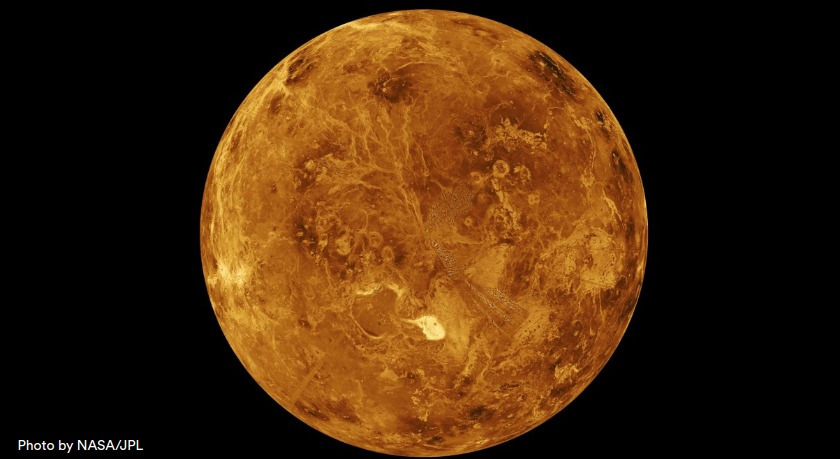Brown University simulations suggest Venus had plate tectonics, which could reveal insights into its history, the possibility of early life

Based on atmospheric data and supercomputer modeling, scientists have proposed that Venus had Earth-like plate tectonics in the past. This discovery raises the possibility of early life on the planet and suggests that the timing of plate tectonics may be a crucial factor in the emergence of life on the planet. The study also demonstrates that the atmosphere of exoplanets can be utilized to understand their early histories, serving as a proof of concept for future research.
Scientists have found that Venus, a planet known for its extremely high temperatures, may have had tectonic plate movements like those on early Earth. According to a research study led by Brown University scientists, the composition of Venus' current atmosphere and surface pressure could only have been possible due to an early form of plate tectonics. Plate tectonics is a critical process for life on Earth as it involves multiple continental plates pushing, pulling, and sliding beneath one another. Over billions of years, this process on Earth led to the formation of new continents and mountains, which stabilized the planet's surface temperature and made it more suitable for life.
In contrast, Venus is Earth's closest neighbor and sister planet but has surface temperatures hot enough to melt lead. Scientists have previously believed that Venus had a "stagnant lid," meaning that its surface only had a single plate with minimal movement and gasses being released into the atmosphere. However, new research shows that Venus must have had plate tectonics after it formed, around 4.5 billion to 3.5 billion years ago, to account for the abundance of nitrogen and carbon dioxide in its atmosphere.
The scientists suggest that early tectonic movement on Venus, like on Earth, would have been limited in terms of the number of plates moving and how much they shifted. Furthermore, this process would have been happening on Earth and Venus simultaneously. This finding opens up exciting possibilities for understanding Venus' evolutionary past, the history of the solar system, and the potential for early life on Venus.
According to lead author Matt Weller, two planets may have coexisted in the same solar system at the same time, operating in a plate tectonic regime. This mode of tectonics allowed for life on Earth, and it also added to the possibility of microbial life on ancient Venus. The study also shows that the two planets were more similar than previously thought before diverging. It highlights the possibility that plate tectonics on planets might depend on timing, which may also be true for the emergence of life. Alexander Evans, a study co-author, said that planets may transition in and out of different tectonic states, and this may be common. Hence, we may have planets that transition in and out of habitability rather than being continuously habitable.
Scientists are investigating how the atmosphere can help in understanding the history of planets. This is important when studying nearby moons, such as Jupiter's Europa, and distant exoplanets. According to a research paper, scientists initially started this work to show that the atmospheres of far-off exoplanets can be powerful markers of their early histories. However, they later decided to investigate this point closer to home.
The researchers used current data on Venus' atmosphere as the endpoint for their models. At first, they assumed that Venus has had a stagnant lid throughout its entire existence. However, simulations recreating the planet's current atmosphere didn't match up with its resulting surface pressure and the amount of nitrogen and carbon dioxide present.
The researchers then simulated what would have had to happen on Venus to get to where it is today. They eventually matched the numbers almost exactly when they accounted for limited tectonic movement early in Venus' history, followed by the stagnant lid model that exists today. The team believes that this work serves as a proof of concept regarding atmospheres and their ability to provide insights into the past.
The study raises a key question: what happened to plate tectonics on Venus? The theory in the paper suggests that the planet ultimately became too hot, and its atmosphere too thick, drying up the necessary ingredients for tectonic movement. The researchers say the details of how this happened may hold important implications for Earth.
Upcoming NASA DAVINCI missions, which will measure gases in the Venusian atmosphere, may help solidify the study's findings. In the meantime, the researchers plan to delve deep into the question raised by the paper. They will explore what conditions could allow Earth to remain habitable and what conditions could force us to move in a Venus-like trajectory.

 How to resolve AdBlock issue?
How to resolve AdBlock issue?